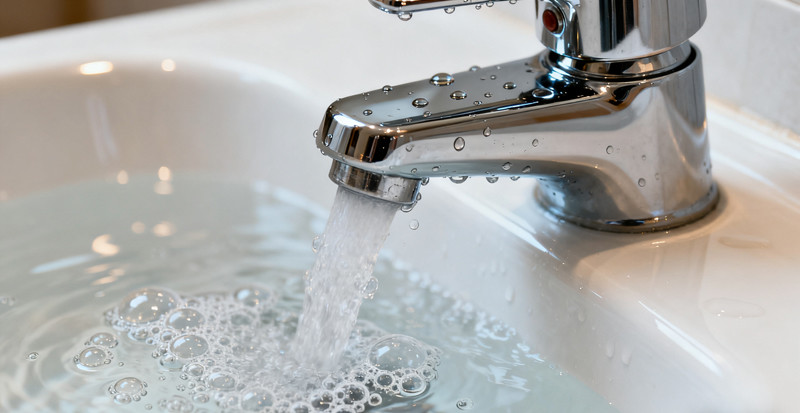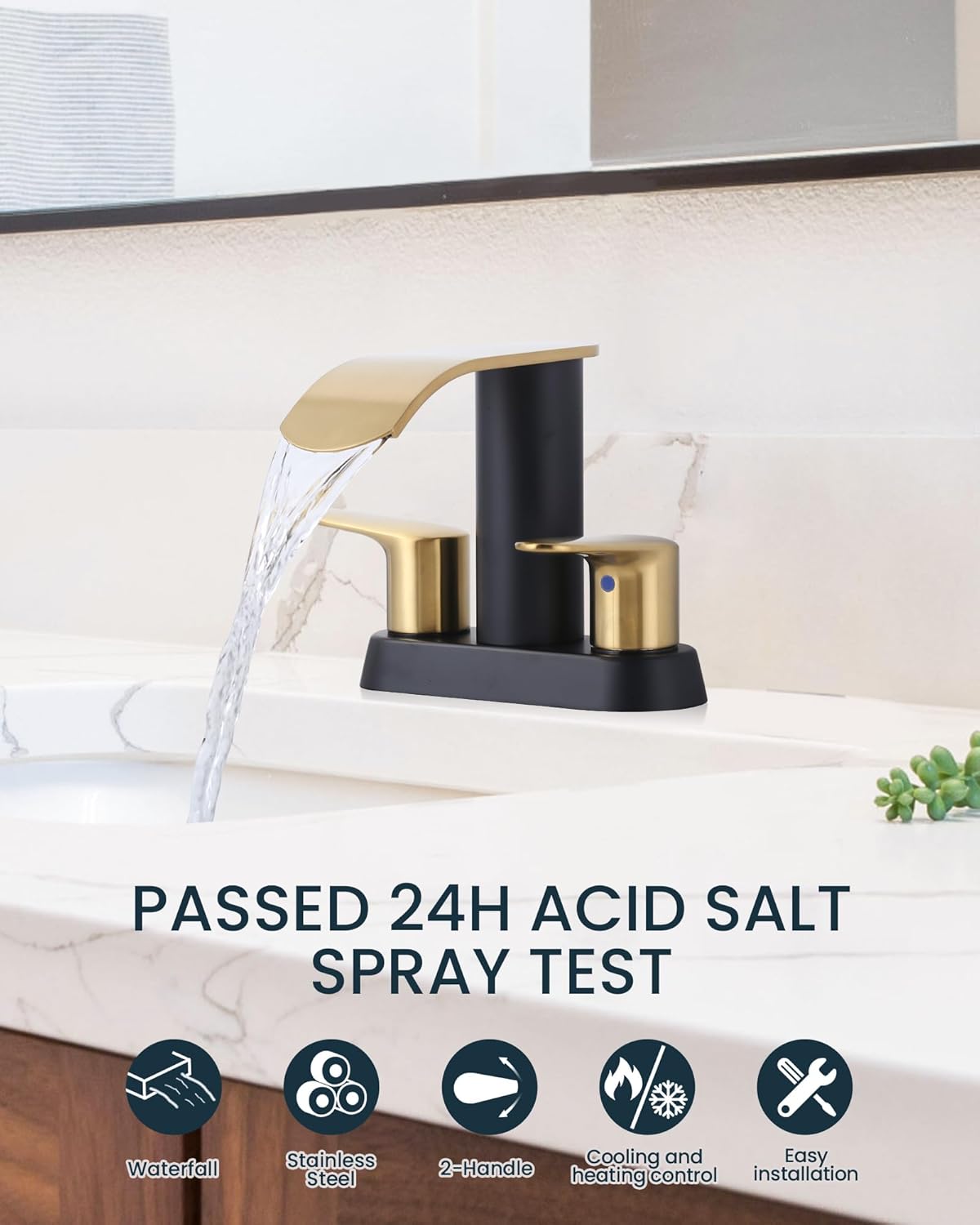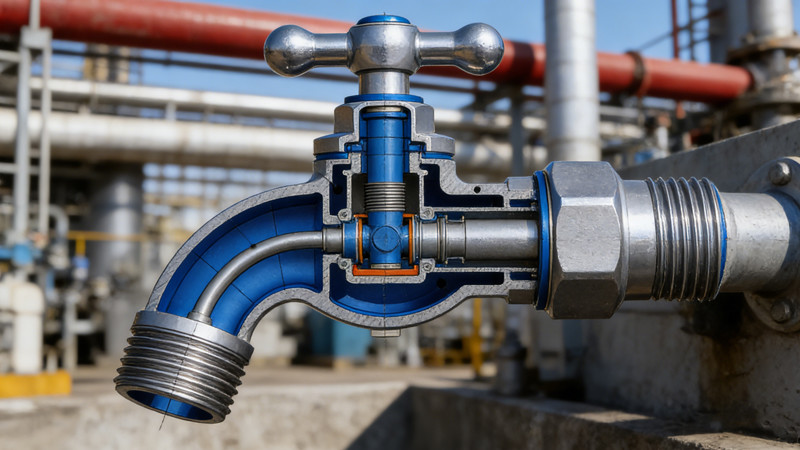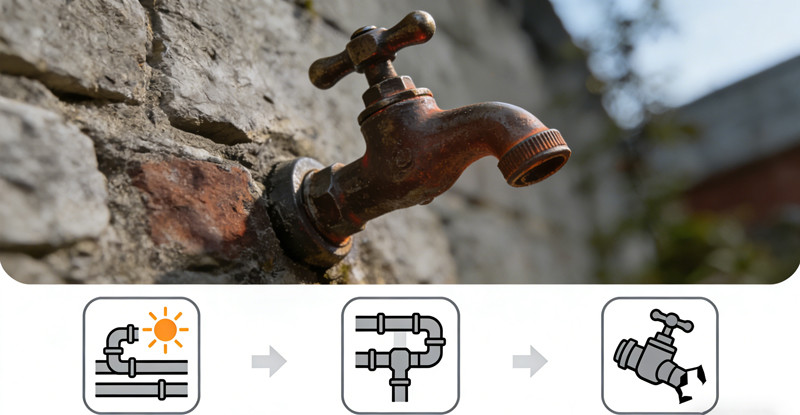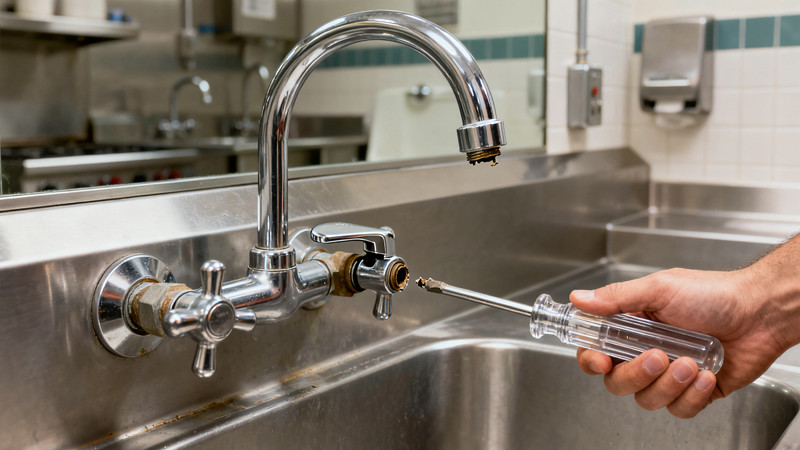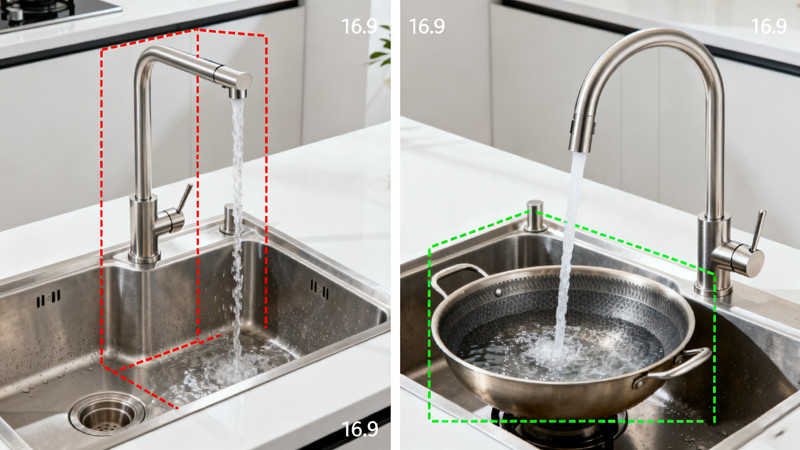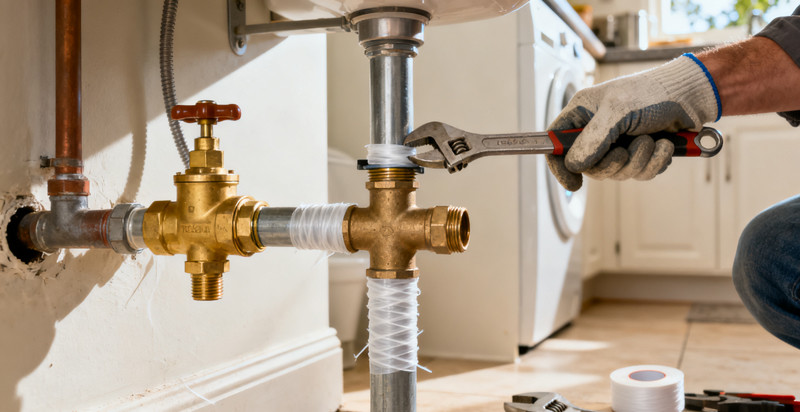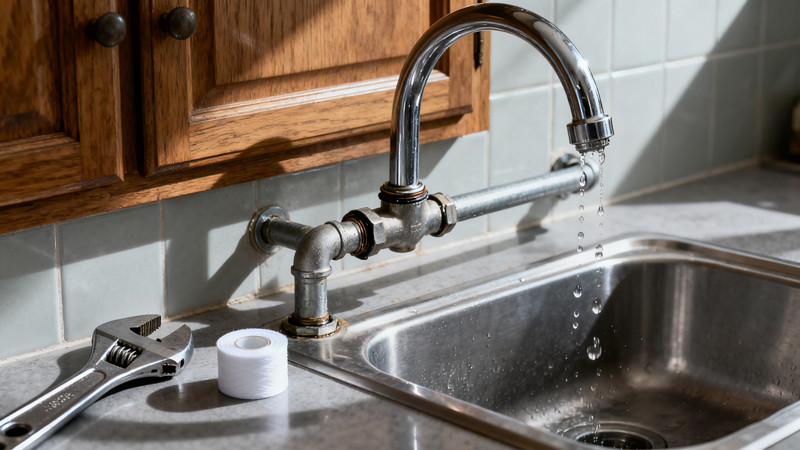You turn on your faucet expecting a smooth, steady stream of water—but instead, it sputters, hisses, or produces cloudy, bubbly water. While it might look alarming, air bubbles in your faucet water are usually not a major plumbing emergency. Still, they can be a sign that air is getting into your water lines, and over time, that can lead to inconsistent pressure or damage to plumbing components.
In this post, we’ll explain why faucets sometimes release air bubbles, what’s normal versus what’s not, and how to fix the issue depending on the cause.
Understanding Why There’s Air in Your Faucet Water
Before diving into fixes, it helps to understand how air gets into your plumbing in the first place. Your water system—whether connected to a municipal supply or a private well—is designed to stay airtight. However, air can sneak in through various points due to pressure changes, leaks, or mechanical issues.
There are two main types of air bubbles you might notice:
- Tiny white bubbles that clear quickly: These are typically harmless and caused by dissolved gases (mostly oxygen) in the water. When water exits the faucet, pressure drops, and these gases form small bubbles that dissipate after a few seconds.
- Large bursts of air or sputtering: This indicates trapped air in your plumbing system, often caused by leaks, recent plumbing work, or issues in your water supply.
Once you know which type you’re dealing with, it’s easier to pinpoint the source and choose the right fix.
1. Check for Normal Aeration First
If your water looks cloudy or milky right after turning on the tap, but clears up within 30 seconds, that’s just air naturally dissolved in the water supply. This happens more often when temperatures or pressures fluctuate, especially during seasonal changes or when water treatment facilities adjust pressure levels.
How to test it:
- Fill a clear glass with tap water.
- Let it sit for 1–2 minutes.
- If the cloudiness clears from the bottom up, it’s simply air escaping—not a problem.
In this case, no repair is needed. Your faucet and water lines are functioning normally.
2. Bleed the Air from Your Plumbing System
If your faucets are sputtering or producing bursts of air, you may have trapped air inside the plumbing system. This can occur after maintenance, pipe replacements, or when water service is restored after an outage.
To fix it, follow these steps:
- Turn off your main water valve. This is usually near the water meter or where your water line enters the home.
- Open all faucets—including sinks, tubs, showers, and outdoor spigots—from the highest point in your home to the lowest.
- Flush the system. Once all faucets are open, turn the main valve back on slowly to allow water to push air out through the open taps.
- Close faucets one by one, starting with the lowest and moving upward.
This process forces air out of the system and restores smooth water flow. It’s a simple but effective way to “reset” your plumbing after air infiltration.
3. Inspect the Faucet Aerator
Sometimes, the issue isn’t deep in your plumbing—it’s right at the faucet. The aerator (the small mesh screen at the end of your spout) mixes air into the water stream to reduce splashing. If it becomes clogged or damaged, it can create uneven flow or bubbles.
Here’s how to clean or replace it:
- Unscrew the aerator from the faucet tip (use pliers if needed, but protect the finish with a cloth).
- Rinse the aerator parts under warm water and scrub with a toothbrush to remove sediment or debris.
- Soak in vinegar for 10–15 minutes to dissolve mineral buildup.
- Rinse again, reassemble, and screw it back on.
If the aerator is worn or cracked, replace it entirely. It’s an inexpensive part that can make a big difference in water flow quality.
4. Check for Leaks or Loose Fittings
If you’re still getting bursts of air after bleeding the lines and cleaning the aerator, there may be a small leak in your plumbing system. Even a tiny gap in a fitting or joint can draw in air when the water is off and push it out when it’s on, causing sputtering.
Where to look:
- Under the sink—check for loose connections between the faucet and supply lines.
- At shut-off valves—inspect for moisture, corrosion, or dripping.
- In older homes—listen for hissing or bubbling noises from hidden pipes when water is running.
Tighten fittings with a wrench if needed, but avoid over-tightening, as that can damage threads. If you can’t locate the source, it might be best to call a plumber for a pressure or leak test.
5. Examine Your Water Heater or Well System
Air in your faucet water can also originate from your water heater or well pump system (if you’re not on city water).
For water heaters:
- Air can accumulate in the tank, especially if the system hasn’t been used for a while or if the dip tube is damaged.
- Flushing your water heater can help remove trapped air and sediment that contribute to bubbling.
For well systems:
- A failing check valve or pressure tank bladder can introduce air into your plumbing lines.
- If you notice the issue only affects cold water or occurs intermittently, have your well pump and pressure tank inspected by a technician.
6. Watch for Discolored or Smelly Water
If the bubbly water is also discolored (brown, yellow, or reddish) or smells metallic or rotten, it’s a different issue altogether. This could indicate corrosion, sediment buildup, or bacterial activity inside your pipes or water heater. In that case, air bubbles are just a symptom of a larger problem that needs professional diagnosis.
Always address discolored or foul-smelling water promptly—especially if it persists in multiple faucets or both hot and cold lines.
7. Preventing Air Bubble Problems
Once you’ve cleared the air from your plumbing, a few preventive measures can help keep it that way:
- Regularly flush your plumbing system (every 6–12 months) to clear sediment and trapped air.
- Maintain consistent water pressure (around 50–60 psi) using a regulator.
- Have your water heater drained and cleaned annually.
- Check aerators every few months and replace them if they clog or corrode.
Final Thoughts
Air bubbles in faucet water are usually harmless—but they can signal small leaks, system pressure issues, or plumbing wear that shouldn’t be ignored. Start with simple fixes like bleeding your lines or cleaning the aerator, then move on to inspecting fittings or your water heater if the problem persists.
With a little maintenance and observation, you can restore smooth, steady water flow and prevent minor air problems from turning into costly repairs later on.
 WOWOW Faucets
WOWOW Faucets